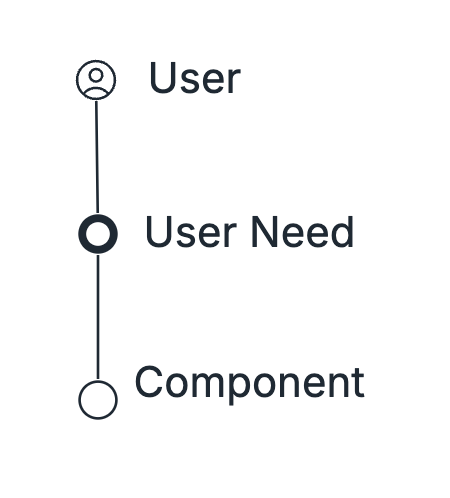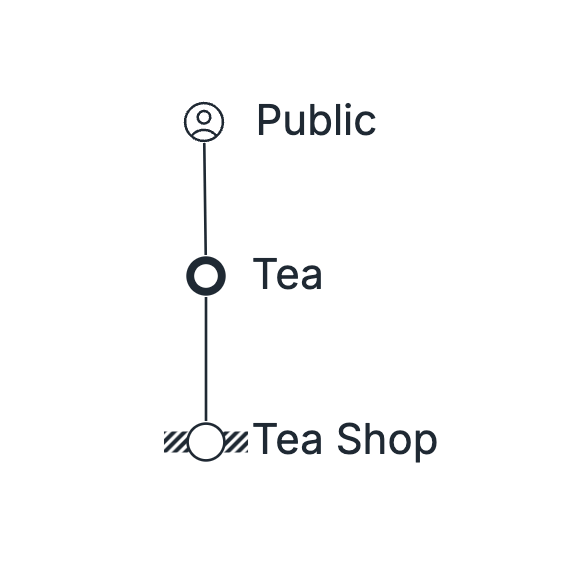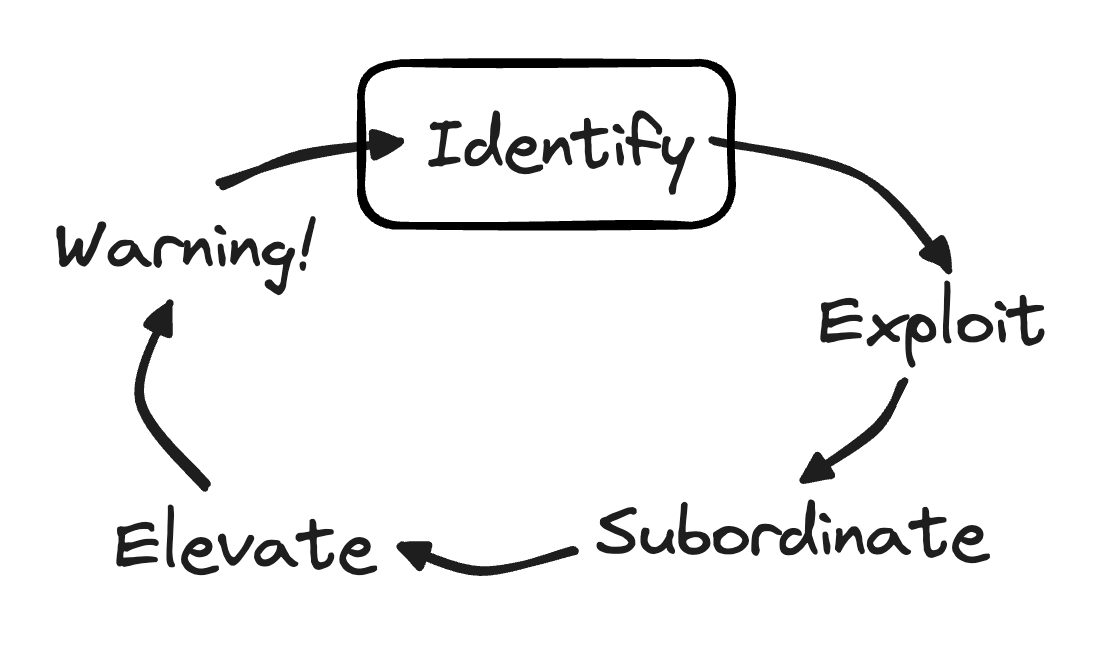Getting started
Select the system
Select the system for learning
Now that you have some familiarity with the Value Chain, Constraint, and an overview of the Five Focusing Steps, you are ready to select a system for learning.
Select a system that you care about and that you want to improve. Ideally, it is also a system that you are familiar with.
In selecting the system, you need to specify it as a high-level Value Chain. That is, decide on the User, User Need, and Component. Do not add more detail at this point. Below are some examples of high-level Value Chains to give you an idea of what it should look like.
| User | User Need | Component |
|---|---|---|
| People | Tea | Tea Shop |
| Diners | Food | Restaurant |
| Readers | Books | Library |
| Shoppers | Products | Online Store |
| Students | Education | School |
| Patients | Treatment | Hospital |
| Audience | Movies | Cinema |
| Passengers | Flights | Airline |
| Members | Fitness | Gym |
| Clients | Financial Services | Bank |
| Guests | Accommodation | Hotel |
| Visitors | Exhibits | Museum |
| Users | Software | Software Company |
| Fans | Music | Concert Venue |
| Buyers | Cars | Car Dealership |
| Visitors | Rides | Amusement Park |
| Customers | Medication | Pharmacy |
| Customers | Coffee | Coffee Shop |
| Shoppers | Clothing | Clothing Store |
| Buyers | Properties | Real Estate Agency |
| Students | Lunch | Cafeteria |
| Employees | Paychecks | Payroll System |
| Customers | Technical Support | Help Desk |
| Residents | Maintenance | Property Management |
| Users | Data Backup | IT Department |
| Shoppers | Checkout | Point of Sale System |
| Drivers | Fuel | Gas Station |
| Patients | Appointments | Scheduling System |
| Members | Library Access | Membership System |
| Employees | Training | HR Department |
| Attendees | Tickets | Box Office |
| Customers | Deliveries | Logistics Department |
| Subscribers | Newsletters | Email Marketing System |
| Teachers | Classroom Supplies | School Supplies System |
| Guests | Room Service | Hotel Service Department |
| Players | Equipment | Sports Equipment Room |
| Visitors | Maps | Information Desk |
| Employees | Workstations | IT Support |
| Managers | Reports | Reporting System |
| Students | Exams | Examination System |
Once you selected the system, this is how we will visually represent it:

Now, you are ready to begin with step one: Identify the System Constraint.

Go back
Constraint
Understand the concept of Constraint in system strategy, focusing on the most limiting factor that restricts the flow of value. This lesson explores how to identify and address the single Constraint within a system, using a tea shop example.

Up next
Identify the System Constraint
Learn how to identify and add detail to the system Constraint in your Value Chain. Follow a step-by-step process to pinpoint a clear and actionable Constraint, using the Tea Shop example as a reference.
